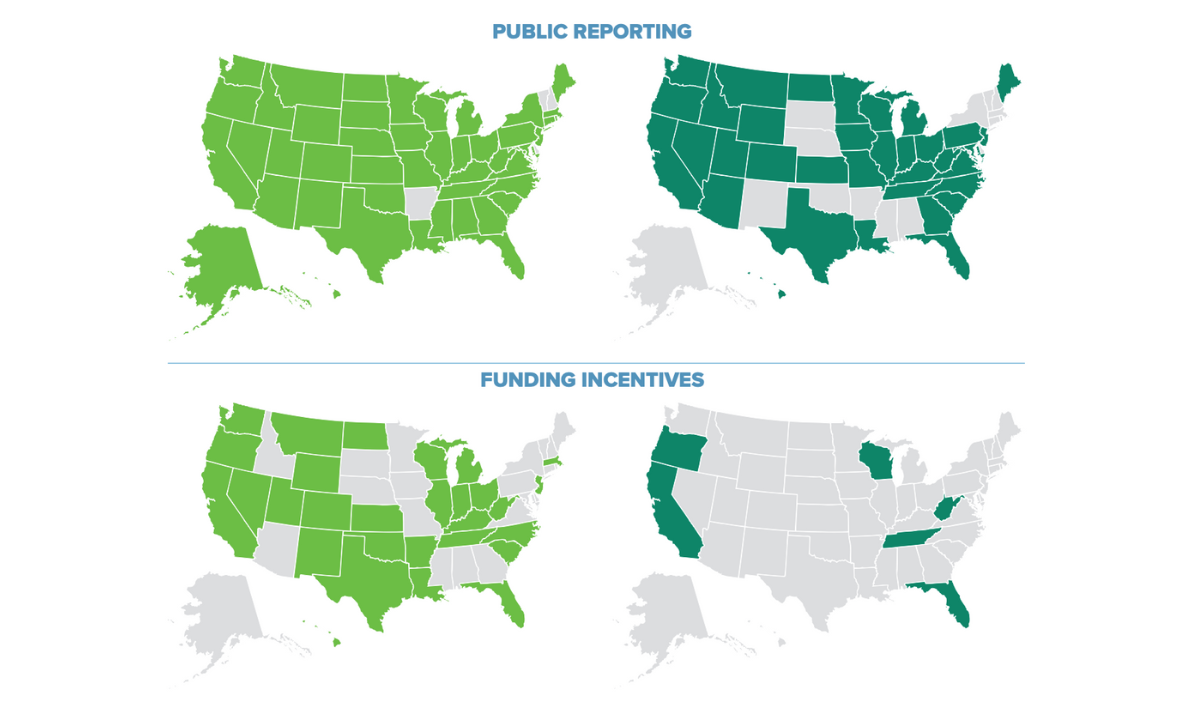State Accountability Systems Must Look Beyond College & Career Readiness
Reyna & Deuser: Earning a degree or credential and landing a good-paying job is now the real measure of K-12 success. State data needs to reflect that

Get stories like these delivered straight to your inbox. Sign up for The 74 Newsletter
For more than two decades, the term “college and career readiness” has defined success in K-12 education. As it became clear that a high school diploma was no longer enough to secure a well-paying career with advancement potential, education advocates recognized that simply getting students across the graduation stage couldn’t prove that school had served them well. Rather, measures of readiness for college — including advanced coursework and scores on entrance exams like the SAT and ACT — were better indicators.
Today, as student debt bogs down millions of Americans and debates about the value of postsecondary education gain steam, college and career readiness is still important — but it no longer works as the primary measure of K-12 success. Preparation for college isn’t the goal; successfully completing a postsecondary program and landing a good-paying job is. Those who seek to improve education systems need to think longer term in their efforts to measure and enhance the effectiveness of K-12 schools.
While there has been progress in public reporting of college and career readiness metrics, very few states weight those measures heavily within their accountability systems or put longer-term outcomes at the center of their efforts to improve education. A new report from Education Strategy Group and American Student Assistance digs into how all 50 states are measuring and prioritizing long-term outcomes — namely, postsecondary and workforce success — by including them in their funding and accountability systems.
At the K-12 level, the report divides the range of potential long-term success measures that states could use into two main categories.
The first is the now-familiar set of college and career readiness metrics, including the rates at which students participate and succeed in Advanced Placement, International Baccalaureate, dual credit and industry-recognized credential programs. These are known to influence and be predictive of success in higher education, and states, districts and schools should unequivocally continue tracking and using them.
But if the ultimate goal of education is to set students on a path to economic opportunity and mobility, more states need to place greater emphasis on the second major category of K-12 metrics examined in this report: postsecondary outcomes.
These capture students’ progress and success in higher education and the workforce. Specific measures in this category include enrollment in two- and four-year colleges, as well as short-term certificate or training programs; attainment of an associate or bachelor’s degree or a credential; military enlistment; employment and earnings.
A look at all 50 states reveals that far more are focused on college and career readiness than on postsecondary outcomes. Although nearly all collect and publicly report on metrics in both categories, there is a dramatic divergence when it comes to using them for formal accountability. Forty-one states and the District of Columbia include college and career readiness metrics in their accountability systems; just eight use postsecondary outcomes.
Ideally, more states would not only feature college and career readiness data as hefty, non-negotiable components of K-12 accountability formulas, but postsecondary and workforce metrics, too. Connecticut, for instance, holds schools and districts accountable for students’ enrollment in a two- or four-year college within one year of high school graduation. The state has set a 75% target and prorates the number of points awarded to districts for accountability scoring based on the percentage of that target they achieve. Taken together, college and career readiness and postsecondary enrollment measures account for 16% of a high school’s rating in the state.
If accountability is the stick, funding is the carrot — and few states attach funding incentives to metrics in either category. Seven states provide K-12 funding based on performance on college and career readiness metrics, and only two link funding to postsecondary outcomes.
Texas is a leader in connecting financial incentives to longer-term outcomes. The state’s College, Career and Military Readiness Outcomes Bonus enables districts to earn extra funding for every student who meets certain thresholds on key measures of post-graduation success. Districts across the state can receive bonuses that range from $2,000 to $5,000 for each student who meets certain readiness criteria and enrolls in college, earns an associate degree or gains an industry-recognized credential within a year of graduation. Bonuses are higher for the success of economically disadvantaged students, encouraging districts to prioritize extra support to meet their needs. The program has already resulted in hundreds of millions of additional dollars flowing to districts across Texas.
Long-term data on student success is also useful for consumers. Massachusetts has extensive reporting on workforce outcomes for high school graduates. The state’s Education-to-Career Hub publishes reports that show employment rates and average earnings for graduates of every public district and school. The Department of Elementary and Secondary Education matches student records with wage data from other government agencies, giving Massachusetts residents a glimpse into how well their districts set graduates up for long-term economic success.
The examples above are encouraging, but insufficient. The majority of the country still does not put long-term economic outcomes at the center of efforts to reshape and improve education systems. Current federal accountability requirements do not necessarily encourage prioritizing of these important measures, so it’s up to states to act. If education leaders are truly committed to helping all young people find economic mobility and prosperity, it’s time to expand the vision for measuring success in K-12 education.
Get stories like these delivered straight to your inbox. Sign up for The 74 Newsletter

;)

